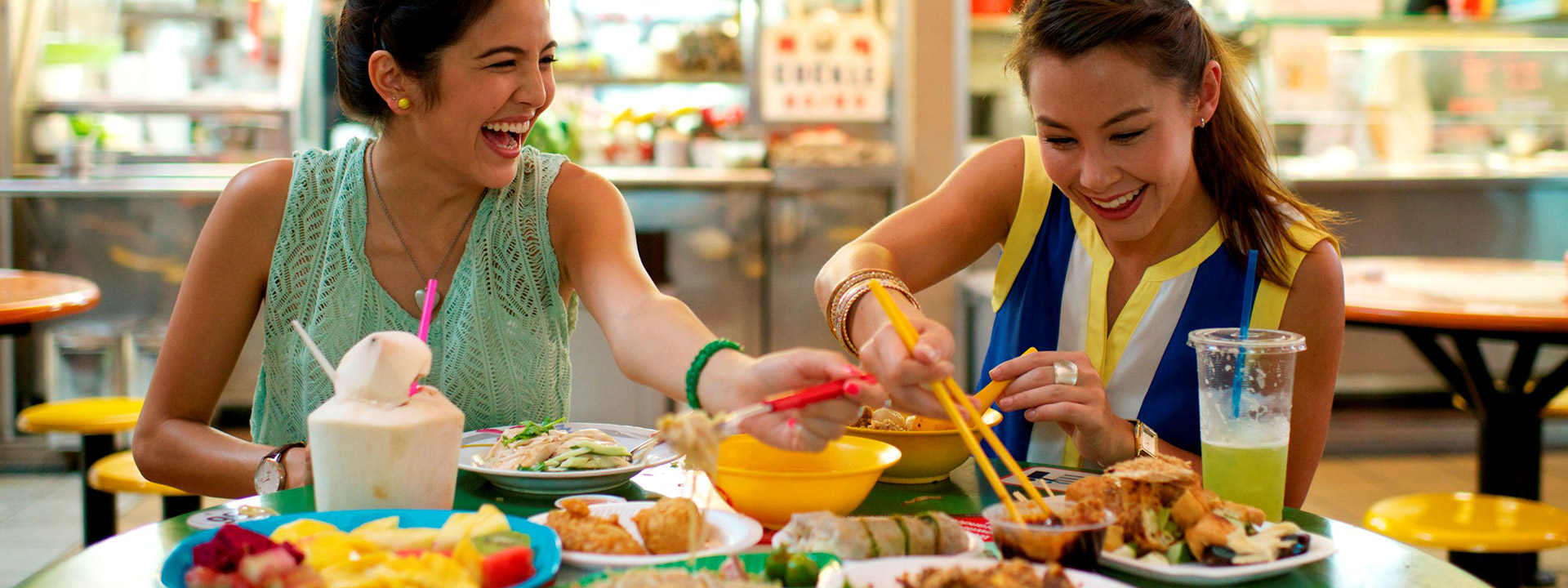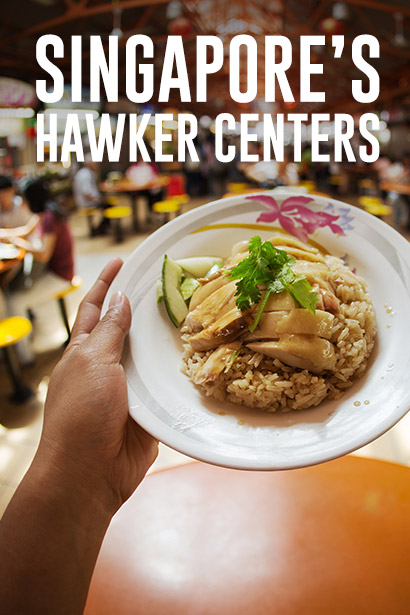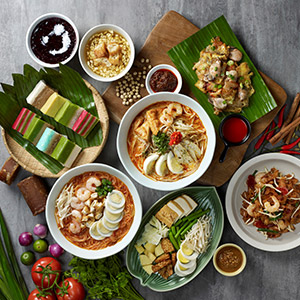

All You Need to Know About Singapore’s Hawker Centers

Hawker Center
THE HISTORY OF THE HAWKER CENTER
To appreciate how critical hawker centers are to the culture of Singapore, it helps to have an idea of their history. Like in many other countries in Asia, street food has been a prominent way of life for centuries. In Singapore, the rapid upgrade from a collection of fishing villages to a thriving port city brought with it an explosion of dining options, but no necessary infrastructure to support it. Hawkers were the soul of the city’s food industry, feeding much of the population, but also the main cause for a number of civic headaches — like sanitation challenges, traffic congestion and a dwindling fresh water supply.
Then, between 1968 and 1986, the newly independent Singapore government tried an equally new approach: investing in the industry. In addition to establishing laws and regulating bodies, they constructed over 113 centralized pavilions — perfectly designed to provide all the necessary amenities for modern dining without sacrificing the authenticity. And thus, a staple of Singaporean culture was solidified as a point of national pride.

Maxwell Hawker Centre
HAWKER CENTERS TODAY
With over 100 hawker centers all throughout the island — and even more on the way — your first sign of a delicious meal being close by is typically heavy foot traffic. Resembling a mix of a food court and a street market, these buildings house seemingly endless rows of food stalls. Expect Singapore’s many cultural influences to be well-represented: Chinese, Malay, Indian, Peranakan and Eurasian for starters.
Deciding where to eat is as simple as following the crowd: Keep an eye out for the longest line. Chances are good that it’s the local crowd favorite for a reason.
But, before you get in line and order, stake out a place to sit. Seating is on a first-come, first-served basis. All you have to do is mark your claim — a tissue packet or an umbrella does the trick perfectly. Make a mental note of your table number, and then head over to the stall (or stalls) you’d like to try.
Once you’ve ordered, the next step depends on the stall. Most stalls will deliver the food to your table number unless specified otherwise. If the stall is noted as “self-service,” then you will need to wait at the stall for your food to be prepared. Of course, all this simply sets up the million-dollar question: What should you eat?
MUST-TRY DISHES
With the options being endless, it’s understandable if you feel a little overwhelmed deciding where to eat. While you can’t go wrong following your gut and the crowd, we’ve included a handful of dishes you might want to consider, if only to get your imagination (and appetite) going in the right direction.

Kaya Toast & Soft-Boiled Egg
Kaya Toast & Soft-Boiled Egg
Part of a quintessential breakfast, kaya is a sweet jam made from sugar, coconut cream and pandan leaves for flavor. It is then generously spread on warm buttered toast and accompanied with a creamy, savory, soft-boiled egg to please every part of your palate at the start of the day.

Hainanese Chicken Rice
Hainanese Chicken Rice
One of Singapore’s national dishes, Hainanese chicken rice originated with Chinese immigrants from the Hainan province. But today, it’s beloved as a Singapore favorite. Intricate in flavor, it’s simple in its critical ingredients: chicken and rice. The chicken is poached at sub-boiling temperatures, with the resulting stock being mixed with garlic, pandan leaves and ginger to cook the rice. The accompanying sauces are where variety flourishes: anything from fresh-minced red chili and garlic to fresh cucumber and light soy sauce might grace the plate, and your taste buds.

Chili Crab

Chili Crab
Chili Crab
Another one of Singapore’s famous national dishes is chili crab. Mud crabs are cooked in the signature sweet, salty and slightly spicy chili sauce. There are plenty of variations to the dish, with some being a small addition of a spice or ingredient, and others being large like substituting chili for black pepper. However it’s prepared, there’s only one way to truly savor the decadent crabmeat, and that’s by eating it with your hands!

Carrot Cake
Carrot Cake
Known colloquially as chai tow kway, carrot cake here is not the same as it is in the Western world. The name comes from the fact that it’s made with daikon radishes, which in Chinese can refer to both carrots and radishes. The dish itself is steamed rice flour, water and radishes cooked into a rice cake, then stir-fried with eggs and occasionally pork lard. Added up, it makes for a delicious snack, and without a doubt the most savory carrot cake you’ll ever try.

Ice Kacang
Ice Kacang
This is the perfect dessert to complete any meal at a hawker center. While it was historically made out of shaved ice and red beans, thanks to the wide range of ingredients and toppings to choose from today, it’s difficult to nail down an all-encompassing recipe. It’ll always be shaved ice, which is covered in a variety of sweet syrups and condensed milk. At the bottom of the bowl, you can expect to find an equally diverse selection of jellies and red beans. Summed up, this dessert perfectly encapsulates what both cuisine and life are like in Singapore: eclectic and incredible.
Ready to savor the delectable delights of a Singapore hawker center? Give one of our travel agents a call. Not only can we go above and beyond in recommending unique discoveries you wouldn’t think to look for — such as various Hawker Foodie Tours (covering the history of Singapore, hawker centers and wet markets today), or the chance to try your hand at cooking local dishes with cooking lessons — but we can also provide exclusive perks and amenities with all the leading name brands in travel. Hawker-center-hopping may be a delicious adventure, but it’s simply the appetizer if you’re privy to expert recommendations of what to see and where to go on your trip to Singapore.



